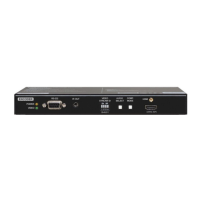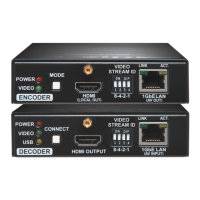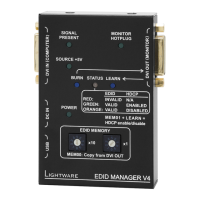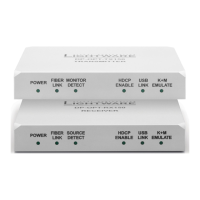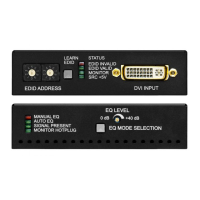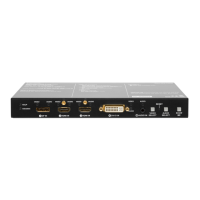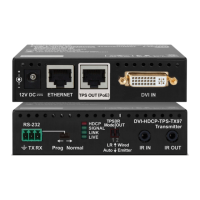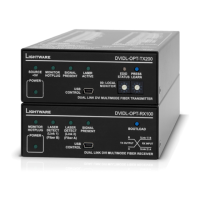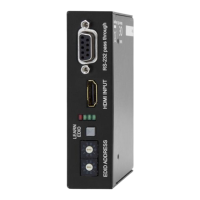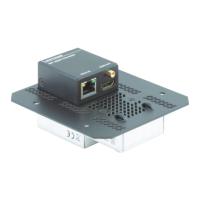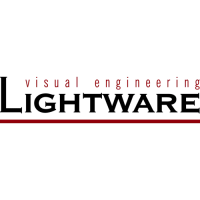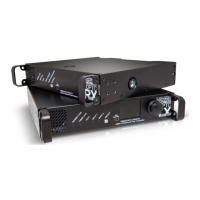6. Programmer's Reference
6.3.6.
DEFINITION:
Description
n- a node
nE an error for a node
nm a manual of a node
ns a child node of a node
pr a read-only property
pw read-write property
pE an error for the property
pm a manual for the property
m- a method
mO a response after a success method execution
mF a response after a failed method execution
mE an error for a method
mm a manual for a method
6.3.7. Error Messages
ç
æ
6.3.8. Escaping
DEFINITION: An escape sequence is a sequence of characters that does not represent itself when used
inside a character or string literal, but is translated into another character or a sequence of characters.
Property values and method parameters can contain characters which are used as control characters in the
protocol. They must be escaped. The escape character is the backslash (‘\’) and escaping means injecting
a backslash before the character that should be escaped (like in C language).
Control characters are the following: \ { } # % ( ) \r \n \t
The original message:
CALL /MEDIA/UART/P1:sendMessage(Set(01))
The escaped message:
CALL /MEDIA/UART/P1:sendMessage(Set\(01\))
6.3.9. Signature
DEFINITION: The signature is a four-digit-long hexadecimal value that can be optionally placed before
every command to keep a command and the corresponding responses together as a group.
number of the lines in the response cannot be determined in advance, e.g. the client is intended waiting for the
whole response and also wants to be sure, that the received lines belong together and to the same command.
In these cases, a special feature the ‘signature’ can be used. In these cases, the response to that particular
command will also be preceded by the signature, and the corresponding lines will be between brackets:
ç
æ {1700
æ
æ
æ
æ
æ
æ
æ }
INFO:

